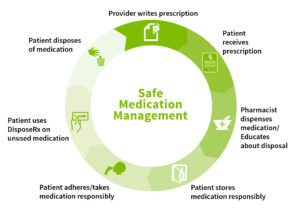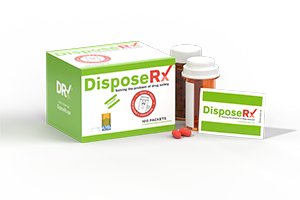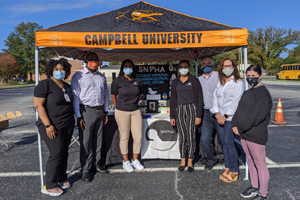March 8-14 is Patient Safety Awareness Week—an opportunity to educate and remind patients about their responsibilities in keeping themselves—and those around them—safe. One of the ways to do this is to practice safe medication management. Our new DisposeRx Safe Medication Management infographic offers steps that should be followed by patients.

Unfortunately, half of steps on this graphic are afterthoughts for many of us.
We certainly are aware of the process involved in the writing and dispensing of prescriptions. And we are growing more accustomed to our pharmacists providing guidance and answering our questions about medication.
But what we need to focus on as part of patient safety are the steps illustrating proper storage and disposal.
A recent U.S. Centers for Disease Control and Prevention (CDC) press release on the dangers of children ingesting prescription medications cited a new studying finding that there are about 400,000 poison center calls and 50,000 ER visits each year and more than half of the time when children get into prescription pills, the medication had been removed from the child-resistant container by an adult.
The child-resistant packaging was legislated via the Poison Prevention Packaging Act of 1970, and while it is hard to debate its effectiveness, the bottles are not always convenient for adults. Many who take multiple medications throughout the day and prefer the colorful pill organizers with pop tops. Unfortunately, these containers are easy to open and many adults do not safely store them out of the reach of others.
We must take steps to ensure that our convenience does not create crisis.
And we must begin to think about prompt and proper disposal—each and every time we pick up a prescription from our pharmacy or have one delivered to our homes. We should maintain our medicine cabinets regularly and consistently—much like we do our refrigerators. Have a plan for your medications when you stop taking them—whether it is mail back or take back or an at-home solution, such as DisposeRx.
Remember that small, proactive steps can keep you and your family safe. We hope you will take time during Patient Safety Awareness Week to assess what you are doing well and improve on any deficiencies.



